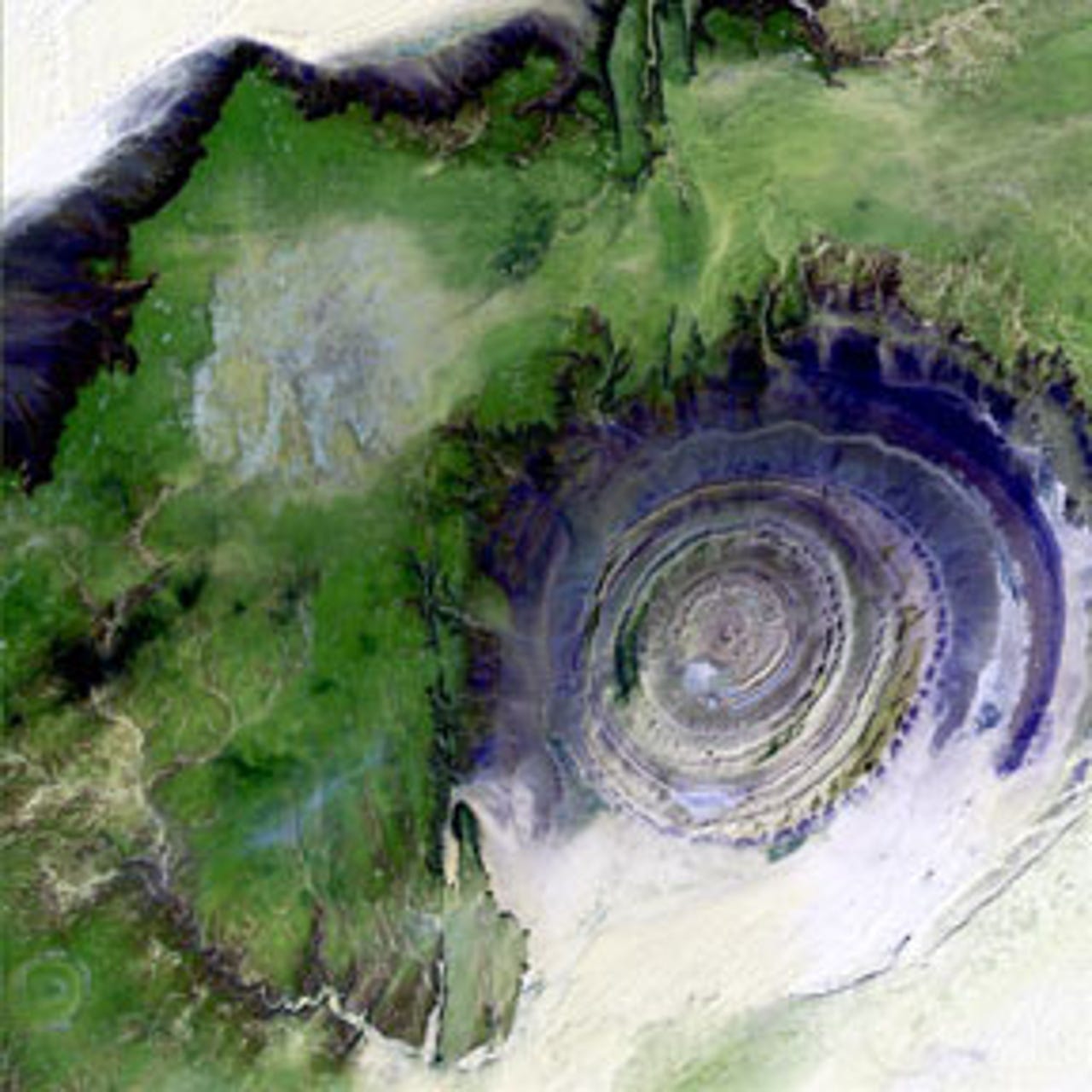Photos: Spirals go from nature to the lab


Richat Structure
Here is a satellite image of the so-called Richat Structure, a geological formation in the Maur Adrar desert, in Africa's Western Sahara. The structure formed when a volcanic dome hardened and then gradually peeled away to show the layers of the rock.
Von Karman Vortices
A satellite image taken of cloud formations over Alaska's Aleutian Islands. Also called Von Karman Vortices, the formations are created when air flows over and around objects in their path to create spiraling eddies in the sky. These particular eddies formed when winds swept east across the northern Pacific Ocean, where they hit the Aleutian Islands.
Whirlpool cloud
A satellite picture taken of a whirlpool cloud, which was shaped by high-altitude winds, that moved over the sea between Spain and Morocco.
Messier 101
This image of Messier 101 is the most detailed photo of a spiral galaxy to come from research using the Hubble telescope. It is a composite of 51 images from the Hubble as well as photos shot from the ground.
Flower
This developing flower displays the spiral form in two aspects: The whole flower begins in a spiral and unfolds as it opens, while the tips of the petals form tiny inward spirals.
Nautilus shell
The nautilus is a cephalopod, like the octopus and squid. Unlike some animals in this class, it has a hard outer shell, which is divided into chambers. As the nautilus grows in size, it periodically seals off the shell behind it and creates a new, larger chamber to live in. This ongoing process creates the familiar spiral structure that is visible when a nautilus shell is sliced in half.
Pax Impeller
The 6-inch PAX Scientific impeller can mix 4 million gallons of water using only 150 watts.
Lux 1 fan
An appliance evaporator fan designed using PAX Scientific geometries.
Lux 1 fan in housing
The PAX appliance evaporator fan in a refrigerator housing.